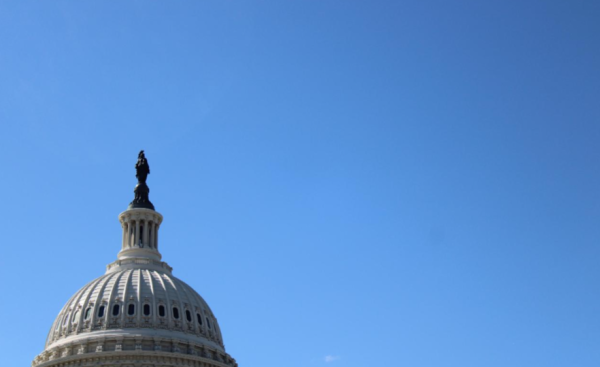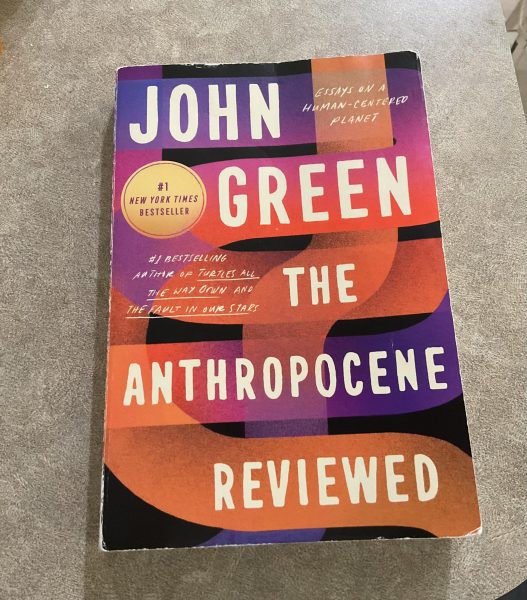It’s About Time
The pros of a permanent clock
IT’S ABOUT TIME. On March 15, the U.S. Senate unanimously agreed to make daylight savings time permanent starting in 2023. The act they decided upon is cheerfully dubbed The Sunshine Protection Act and means that the time we operate on during the summer months will be what we use all year long. If the House of Representatives ends up voting in favor of the bill, it is likely that we will soon be past tediously switching our clocks and will not have to give up those random extra hours of sleep.
On March 15, the U.S. Senate unanimously agreed to make daylight savings time permanent starting in 2023. The act they decided upon is cheerfully dubbed The Sunshine Protection Act and means that the time we operate on during the summer months will be what we use all year long. If the House of Representatives ends up voting in favor of the bill, it is likely that we will soon be past tediously switching our clocks and will not have to give up those random extra hours of sleep.
What sparked this change of heart? A number of factors, along with the fact that this change is actually not as sudden as we think. In 1974, the U.S. attempted to make a similar permanent time act during an oil embargo. And while it did not work then, the arguments made almost 50 years ago have resurfaced and are making their way into the spotlight.
One of those arguments that are vital to this debate is the sheer inconvenience that daylight savings brings.
Not only do we not want to change the time on our cars, microwaves, and alarm clocks, we also do not look forward to facing the psychological effects of readjusting to our environment. As adults who drive to work, children who bike to school, or those who simply enjoy their morning walks, we all have to now do these daily tasks in a completely different light.
Obviously, the purpose of creating daylight savings time in the first place was not to try and bother as many people as possible. It was to conserve energy. And while a good idea in theory, a 2008 study found that “moving clocks forward actually increased electricity consumption as people started using more power-hungry appliances, like air-conditioning, later into the evening,” according to Fortune magazine. Further research has corroborated that claim, repeatedly concluding that if any energy happens to be saved during these few months, it is a minuscule amount.
With little to no energy-saving benefits, it seems imperative to stop this “tradition” of moving the clock. But if you are not convinced yet, there are even more ways that keeping daylight savings time switches could have long-lasting harm.
For one, changing the clock biannually messes with our sleep schedules. We get thrown off by an entire hour, which may not seem too significant in writing, but can cause a ripple effect in the weeks to come. During that period of time, we see a notable increase in car accidents. Drivers who are sleep-deprived and not used to commuting in a new light are more prone to making a wrong turn here or there. Just an hour of sleep loss can be the difference between life or death on the road.
Better sleep can also benefit us emotionally. According to a 2017 review published in Epidemiology, “an 11% increase in reports of depression symptoms in psychiatric patients faded about 10 weeks after clocks fell back for winter.” Ten million Americans also currently report having forms of seasonal depression, so trying to keep us in the dark more than necessary is not going to help. Instead, a steady year-long schedule will reduce the negative chain reaction that a sudden change in the environment can create.
Daylight savings time puts us at a greater risk for cardiovascular issues too. According to a research study conducted in Sweden, there is “an average 6.7% greater risk for a heart attack in the three days following spring DST.” The rate of strokes rises as well.
With all that in mind, it is clear that daylight savings has reached the end of its time. A concept that was first introduced after World War l to save energy and maximize sunlit hours has now become a cumbersome burden that almost every American cringes at the thought of. The inconveniences, minimal energy benefits, along with sleep and health problems are proof enough that it is about time to reassess.
Your donation will support the student journalists of Sycamore High School. Your contribution will allow us to purchase equipment and cover our annual website hosting costs.












